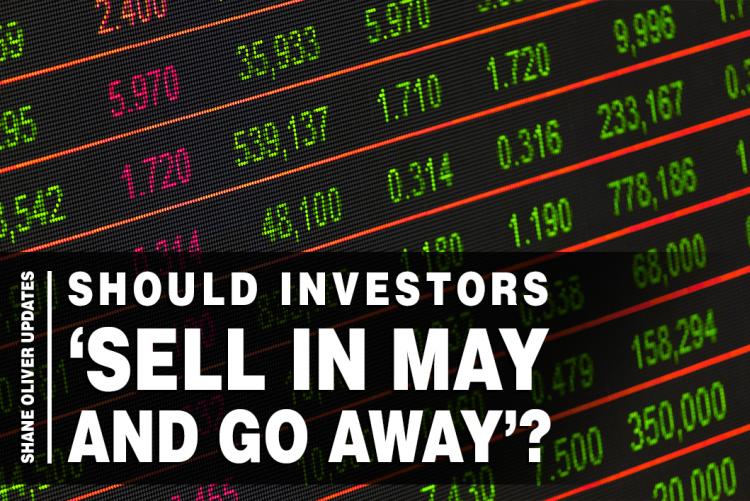It’s May and, of course, investors are hearing that old saying, ‘sell in May and go away’.
The share market does have a seasonal pattern. It tends to rally through Christmas and the New Year period. The rally typically continues to May. Then we see weakness which is often notable somewhere between August and November. And then the cycle starts again.
But while the saying does provide some useful information on when to buy and sell it doesn’t mean that long-term investors should panic and dump their shares.
A grain of truth?
There are different theories about the origins of the ‘sell in May’ saying.
The full saying is actually, ‘sell in May and go away, and come back on St Ledgers Day’. St Ledgers Day is a UK horse race held on the second Saturday in September.
That suggests the saying and seasonality in markets originated in the UK, with a theory that it was linked to crop cycles.
To have money to buy summer crops like grain and wheat, grain merchants would have to sell their shares, which depressed prices around August and September. Then when they sold the grain on to mills, they would buy back their shares, just in time to help drive the Christmas rally.
New Year cheer
More recently, there’s been a debate that this market seasonality is due to tax loss selling in the US. That’s where investors in the US sell their shares through August/September to lock in tax losses to offset against capital gains. This pushes the market down.
They then have to buy back into the market towards the end of the year. When combined with New Year cheer – people being more optimistic about the year ahead – along with people investing bonuses and low capital raisings, that gives us the rally through Christmas/New Year. Then you get this rally up until May. By which time it all peters out again and the cycle repeats.
Whatever the origins of the cycle, it does seem to persist through time and across a whole range of countries, including the Australian share market, as you can see in the chart below.

Correction risk
So far this year, the market is following this seasonal pattern. We have seen a pretty good rally up until May. The US share market has hit record highs and Aussie shares, along with global shares, have climbed back to highs reached last year (or in some cases gone above that).
Given these strong gains – US shares are up 25 per cent or so and Aussie shares up 17 per cent – we may be due for a bit of a correction in markets, particularly given the uncertainty around global growth and trade. Those factors could give us a bit of weakness in the short term.
So what should investors do?
If you’re a trader, you could make an argument to sell in May and buy back in a little later.
But if you’re a long-term investor, I would advise ignoring most of this because I think by the end of the year the share market will be higher and you certainly shouldn’t be concerned about seasonal fluctuations in markets.
Global growth will be ok and Australia will avoid a recession. We’ve also still got very easy monetary conditions globally. And valuations of the share market – particularly compared to bank deposits and bond yields – are reasonable. All that suggests positive returns from shares in 2019.
If, however, you are planning to buy or sell shares heavily, ‘selling in May’ is worth taking into account. If you’re going to pile into shares, maybe May isn’t the time to be doing it. And if you’re going to pile out of shares, September to November isn’t a good time to do that.
But if you take a very long-term perspective – you’re just trying to get the benefit of compound interest over long periods of time from growth assets – you should just sit tight and hold on to your shares.

